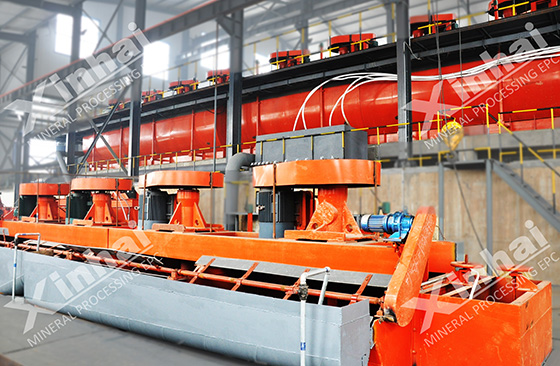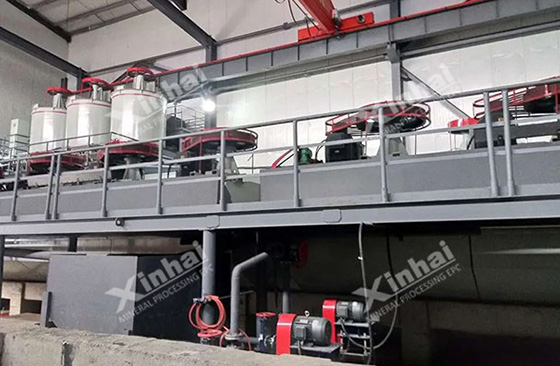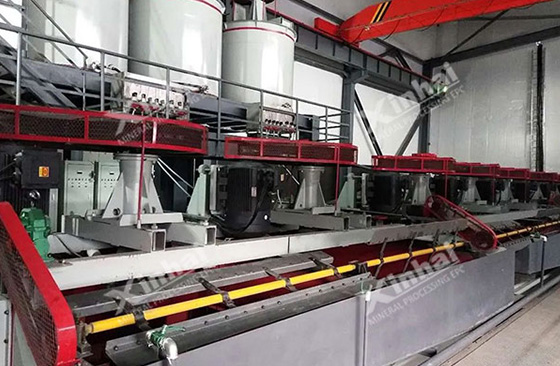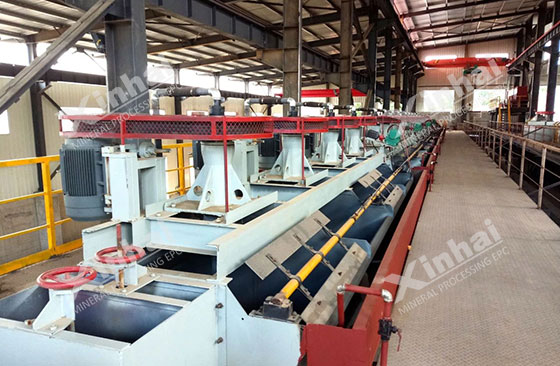
In the flotation process of iron ore, the use of depressants plays a key role in achieving effective separation. Depressants can selectively inhibit the flotation of iron ore, thereby improving the separation efficiency of target minerals and impurity minerals. This article will introduce in detail the types of flotation reagents used to depress iron ore in flotation, as well as the characteristics of various depressants and the mechanism of depressing the flotation of iron ore.

1. Organic inhibitors
Common organic inhibitors for iron ore mainly include starch and its derivatives, lignin sulfonates and humic acid.
Starch and its derivatives: Starch is a natural polymer compound that can be adsorbed on the surface of iron ore to reduce its hydrophobicity, thereby inhibiting the floating of iron ore. Starch derivatives such as carboxymethyl starch and cationic starch are widely available, inexpensive and environmentally friendly. They have a certain selectivity in inhibiting iron ore, and their inhibitory effect on silicate minerals is relatively weak. In addition, the inhibitory effect of starch is less affected by factors such as pulp pH and temperature.
Lignin sulfonate: It forms a complex with metal ions on the surface of iron ore to increase the hydrophilicity of the mineral surface. At the same time, the molecular structure of the inhibitor contains hydrophilic groups such as sulfonic acid groups, which can enhance the hydrophilicity of the mineral surface. Lignin sulfonate has a certain degree of dispersibility and can prevent the agglomeration of mineral particles. Its inhibitory effect on iron ore is relatively weak, but it has a better inhibitory effect on silicate minerals. The inhibitory performance of lignin sulfonate is greatly affected by factors such as pulp pH value and ionic strength.
Humic acid: It is an organic substance widely found in nature and has a variety of functional groups. In iron ore flotation, humic acid forms a hydrophilic film on the surface of iron ore through adsorption and complexation, reducing the hydrophobicity of the mineral surface, thereby inhibiting the floating of iron ore through adsorption and complexation. The functional groups such as carboxyl and phenolic hydroxyl in the molecular structure of humic acid can form complexes with metal ions on the surface of iron ore, further enhancing the inhibitory effect. It is characterized by low cost, good environmental protection, and a certain selectivity in the inhibitory effect on iron ore, while the inhibitory effect on silicate minerals is relatively weak.

2. Inorganic inhibitors
Common inorganic inhibitors for iron ore include water glass, phosphates and fluorides.
Water glass: The main component is sodium silicate. In iron ore flotation, water glass can inhibit silicate minerals and also has a certain inhibitory effect on iron ore. Its mechanism of action is to form silicate colloid on the surface of the mineral, adsorb on the surface of the mineral, form a hydrophilic film, and reduce the hydrophobicity of the mineral surface. In addition, water glass can also form complexes with metal ions on the surface of the mineral to increase the hydrophilicity of the mineral surface.
Phosphates: can form insoluble complexes with metal ions on the surface of iron ore, reduce the hydrophobicity of the mineral surface, and at the same time, phosphate inhibitors can also form a hydrophilic film on the surface of the mineral to inhibit the floating of iron ore. Commonly used phosphates include sodium hexametaphosphate, trisodium phosphate, etc., which have good inhibitory effects and strong selectivity.
Fluorides: can form insoluble fluorides with metal ions on the surface of iron ore, change the properties of the mineral surface, reduce the hydrophobicity of the mineral surface, and change the properties of the mineral surface to achieve inhibitory effects. Fluorides (sodium fluoride, ammonium bifluoride, etc.) have good inhibitory effects and strong selectivity. They have obvious inhibitory effects on some iron-containing minerals, but relatively weak inhibitory effects on other minerals.

The mechanism of inhibitors inhibiting iron ore flotation mainly includes the following aspects:
Changing the surface properties of minerals: Inhibitors can form a hydrophilic film on the surface of iron ore through adsorption, complexation, etc., reducing the hydrophobicity of the mineral surface, making it difficult for iron ore to attach to bubbles and float. Inhibitors can also form insoluble compounds with metal ions on the surface of iron ore, changing the chemical properties of the mineral surface and reducing the floatability of the mineral.
Competitive adsorption: Depressants can compete with flotation collectors to be adsorbed on the surface of iron ore, reducing the amount of collector adsorbed on the mineral surface, thereby reducing the floatability of iron ore. The adsorption capacity of depressants is usually weaker than that of collectors, but under certain conditions, they can be preferentially adsorbed on the surface of iron ore, thereby inhibiting the floating of iron ore.
Adjusting the properties of ore pulp: Depressants can adjust the pH value, ionic strength and other properties of ore pulp, affecting the performance of flotation collectors and the charge state of mineral surfaces, thereby indirectly inhibiting the floating of iron ore.

The above is an introduction to the types, characteristics and action mechanisms of commonly used depressants for inhibiting iron minerals in flotation. How to inhibit iron ore flotation in actual ore dressing plants and how to select depressants depends on the actual conditions of the ore dressing plant. Therefore, it is recommended to conduct ore dressing test analysis to give the type and dosage of depressants.
To find out more about our products and solutions, please fill out the form below and one of our experts will get back to you shortly.